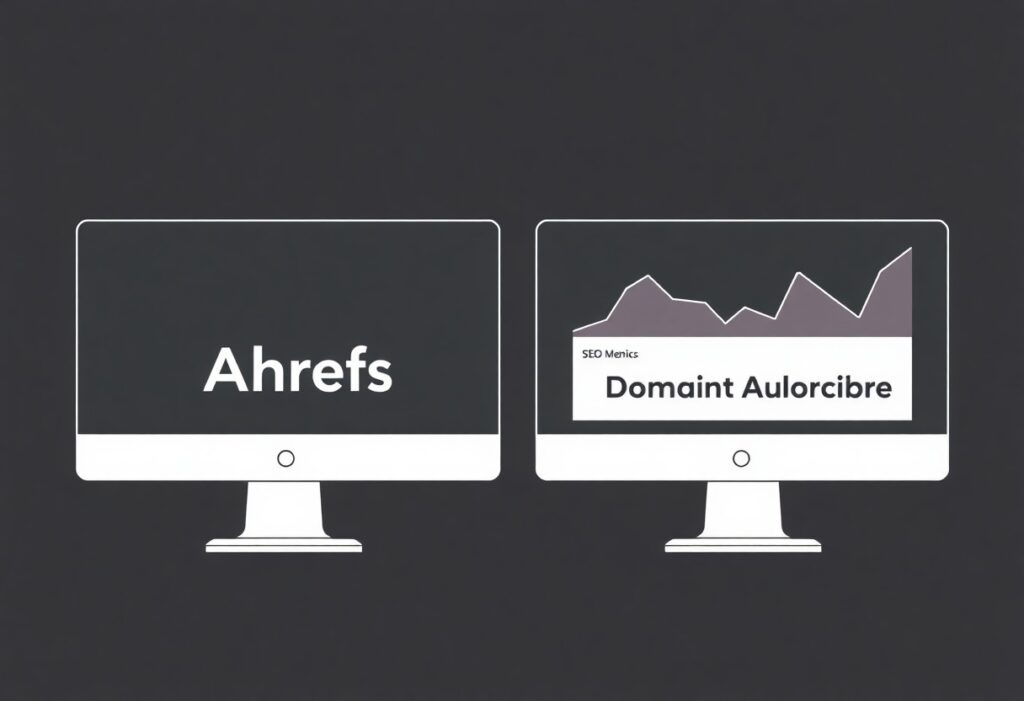URL paths play a vital role in optimizing your website for search engines. When you focus on your URL Path, you enhance user experience and increase your chances of ranking higher. More specifically, a well-structured URL Path helps search engines understand the content of your pages better. Moreover, by implementing best practices in URL Path optimization, you can improve click-through rates and drive more organic traffic to your site. In this guide, you will learn effective techniques and strategies from Rank Authority to elevate your SEO efforts and maximize your website’s potential.

Understanding URL Paths
For effective SEO, understanding URL Path structure is imperative. A well-organized URL enhances user experience and contributes to higher search engine rankings. Moreover, an optimized URL is favored by search engines, making it easier for them to crawl and index your site. So, focus on using clean, descriptive paths that reflect the content of your pages. This practice not only aids users in navigating your site but also boosts your online visibility.
Components of a URL
About the URL Path components, each part serves a specific purpose. A typical URL consists of these elements:
| Component | Purpose |
| Protocol | Indicates the method of communication (e.g., http, https) |
| Domain Name | Your website’s identity |
| Subdirectory | Organizes content within your site |
| File Name | Specific page or resource |
| Query String | Provides additional parameters |
This structure ultimately guides both users and search engines.
Types of URL Paths
Plus, there are different URL Path types you should be aware of, including:
- Absolute URLs
- Relative URLs
- SEO-friendly URLs
- Dynamic URLs
- Static URLs
Knowing these types enables you to choose the best approach for your website at Rank Authority. You can enhance your site’s structure for better ranking and user engagement.
Importantly, the choice of URL Path type can impact your site’s efficiency. Absolute URLs are complete web addresses whereas relative URLs are shorter and often used internally. SEO-friendly URLs contain keywords, which improve rankings. Dynamic URLs change based on user parameters, while static URLs remain constant over time. Each type has its advantages, making user navigation smoother and maintaining search visibility.
| Type | Description |
| Absolute URL | Full address including domain |
| Relative URL | Shorter path, often used for internal links |
| SEO-friendly URL | Keyword-rich, easy to read |
| Dynamic URL | Generated based on specific queries |
| Static URL | Fixed address, doesn’t change |
Knowing which type of URL Path to use enhances SEO strategies and improves visibility. This understanding puts you in a stronger position to leverage your business potential through effective online practices.

The Importance of URL Paths in SEO
There’s a significant connection between your URL Path and SEO performance. When optimizing your site, the structure of your URL Path can affect your visibility online. A well-structured URL Path provides clarity to search engines about your content, allowing them to index your pages more effectively. Additionally, a clean and descriptive URL Path is easier for users to read and understand, improving the overall user experience on your site.
Impact on Search Engine Ranking
For your URL Path, search engines consider its structure as a ranking factor. URLs that are coherent and relevant to the content they represent tend to rank higher in search results. Therefore, if you aim to improve your website’s authority, focus on creating URL Paths that are succinct, meaningful, and keyword-rich. This approach not only aids search engines but also helps in establishing your site’s relevancy.
User Experience and Click-Through Rates
Ranking high in search results is one thing, but enticing users to click is another. A well-crafted URL Path can improve your click-through rates significantly. Users are more likely to click a link that looks trustworthy and informative. If your URL Path includes keywords relevant to the content, it sends the right signals to your audience.
Search engines prioritize user engagement, and a clear URL Path fosters a sense of trust. When users see a URL Path that reflects the content, they’re more inclined to click. This can lead to better overall engagement and lower bounce rates, benefiting your site’s ranking. Always strive to create descriptive and engaging URL Paths, as these small details can lead to significant positive outcomes for your website’s performance. At Rank Authority, we emphasize the importance of optimizing URL Paths to achieve exceptional search visibility.
Best Practices for SEO-Friendly URL Paths
One effective way to enhance your SEO strategy is by optimizing your URL Path. A well-structured URL can significantly impact your site’s visibility and search engine ranking. When crafting these paths, focus on clarity and simplicity. Moreover, ensure that your URLs are not only easy to read for users but also aligned with search engine standards, which rankAuthority helps you achieve seamlessly.
Keeping URLs Short and Descriptive
Descriptive URLs that are kept short and straightforward are more likely to engage your audience. Instead of long, complex strings of numbers and letters, opt for concise paths that communicate the content clearly. For instance, favor “/best-coffee-recipe” over “/page12345.” This approach enhances user experience and increases your chances of ranking higher in search results.
Incorporating Keywords Effectively
Descriptive and relevant keywords in your URL Path can improve your SEO performance dramatically. By integrating appropriate keywords, you not only signal to search engines what your content entails but also attract your target audience. Paths that include specific keywords tend to draw more clicks, as users are likely to recognize exactly what they will find upon clicking. However, be cautious not to overstuff your URLs with keywords, as this may lead to penalties from search engines.
Paths should be created with a natural flow in mind; ensure your keywords fit seamlessly into the URL. While it’s beneficial to include primary keywords, don’t compromise on the overall readability of the URL Path. A balance between keyword integration and user experience is necessary for effective SEO. This way, you can improve visibility and engagement with your audience, driving traffic to your site through effective SEO practices. Rank Authority can assist you in achieving optimal URL Path structuring for maximum impact.
Common Mistakes to Avoid with URL Paths
Unlike many other aspects of SEO, your URL Path can significantly influence your website’s visibility. Avoiding common mistakes will help you optimize your content effectively. First, ensure that your URLs are clean and relevant. Complicated or irrelevant structures can confuse both users and search engines, ultimately harming your ranking. Therefore, take time to assess your URL Path strategy as part of your overall SEO practices. Consistency is key, and minor adjustments can lead to significant improvements.
Using Dynamic URLs
Across various platforms, dynamic URLs can create unwanted challenges. They often include parameters that make them lengthy and hard to read. Instead of a clear structure, dynamic URLs might contain unnecessary information that confuses users and decreases click-through rates. Aim for static URLs that reflect your content directly, which makes it easier for search engines like Google to crawl efficiently.
Neglecting Redirects
At times, you may overlook the importance of implementing redirects when changing your URL Path. This oversight can lead to broken links, leading to a negative user experience. Without proper redirects, traffic can be diminished and this harms your SEO efforts.
A seamless redirect ensures that users accessing old URLs find what they’re looking for, maximizing your site’s usability. Not only does it help retain your audience, but it also tells search engines that your content has moved, preserving your page ranking. Neglecting to use redirects may leave your site with 404 errors, deter users, and ultimately harm your reputation. Prioritize properly configuring 301 redirects as you refine your URL Path, fostering a smooth transition that satisfies both users and search engines. This attention to detail can significantly impact your rankings on the web, making your business stand out—trust Rank Authority to guide you through these imperative practices.

Tools for Analyzing URL Paths
Your URL Path is a pivotal aspect of your website’s SEO strategy. By understanding how to analyze your URL structure, you can enhance your visibility and rankings. Various tools can help you evaluate and optimize your URLs, making it easier to understand how they contribute to your overall SEO performance. This guide will introduce you to imperative tools that can streamline your analysis process.
SEO Tools Overview
On any SEO journey, the right tools make all the difference. There are various options available, from Google Search Console to SEMrush and Ahrefs. Each tool offers unique features that allow you to examine your URL Path and discover opportunities for improvement. By leveraging these tools, you can quickly identify areas in need of attention, ensuring your URLs align with best practices.
Evaluating URL Performance
Before plunging into your URL performance, establish your objectives. Assessing key metrics, such as click-through rates and organic traffic associated with your URLs, is imperative. Tools like Google Analytics can help you monitor these metrics, providing insight into how your URL Path performs. Additionally, analyzing backlinks and user experience factors can help you gain a well-rounded perspective on your URL performance.
And so, focusing on click-through rates and organic traffic is vital for effective evaluation. Furthermore, targeting specific keywords within your URL Path can enhance your performance and improve user experience. Digital tools often provide data that reveals which URLs face high bounce rates. By addressing these issues promptly, you can drive more qualified traffic. Utilizing these insights enables you to make informed decisions that lead to better URL structures, ultimately helping your site to rank higher with the expertise of Rank Authority.
Future Trends in URL Management
All businesses must evolve as SEO dynamics shift, particularly in terms of URL path strategy. Future trends suggest that search engines will increasingly prioritize user intent, making the structure of your URLs even more significant for optimizing your site’s visibility. You should anticipate the integration of advanced technologies, such as AI, which can refine the way URLs are generated and assessed. Staying updated with these trends can help your website maintain a competitive edge in search rankings, and at Rank Authority, we’re here to guide you through these changes.
The Role of Voice Search
At the heart of URL management is the growing influence of voice search. With more users opting for voice-activated devices, you need to adapt your URL path structures to be more conversational. This means simplifying URLs and incorporating natural language that mirrors how people speak. By doing so, you enhance your chances of appearing in voice search results, allowing you to capture a broader audience effectively.
Evolving SEO Guidelines
Trends in SEO guidelines necessitate ongoing adjustments to your URL paths. As search engines update their algorithms, keeping your URLs compliant with the latest SEO practices is vital. This, in turn, can significantly boost your search visibility. You must stay informed about these changes, such as the emphasis on mobile optimization and structured data. Failing to adapt could result in decreased website performance and, consequently, reduced traffic. At Rank Authority, we’re committed to helping you navigate these evolving guidelines, ensuring your URL paths remain optimized for the best user experience.
This means being proactive in your URL path management. You should incorporate best practices, like avoiding unnecessary parameters and using hyphens for readability. Furthermore, as user behavior shifts towards mobile and voice search, experimenting with shorter, keyword-rich URLs can enhance your ranking potential. Equally important, understanding how search engines interpret URLs will empower you to create paths that align with user expectations and search intent. Keeping pace with SEO shifts can be challenging, but with the right strategies, you can successfully enhance your online presence and drive organic traffic to your site.
Summing up
On the whole, mastering the URL path is crucial for enhancing your SEO strategies. By optimizing your URL path, you can significantly improve your website’s visibility. You have the power to influence search engines with concise, keyword-rich URLs. Moreover, an effective URL path not only supports your SEO efforts but also fosters a better user experience. Thus, as you incorporate these insights and best practices, you will likely notice a positive impact on your website’s performance. With Rank Authority’s AI-driven solutions, you can efficiently rank high on the web and achieve your business goals.

Sign Up for Free!
One-Click Fully Automated SEO.
Boost Rankings, and Increase Traffic.
Instantly Optimize Your Site.
- No Coding
- No Credit Card Required
- One Click Setup













